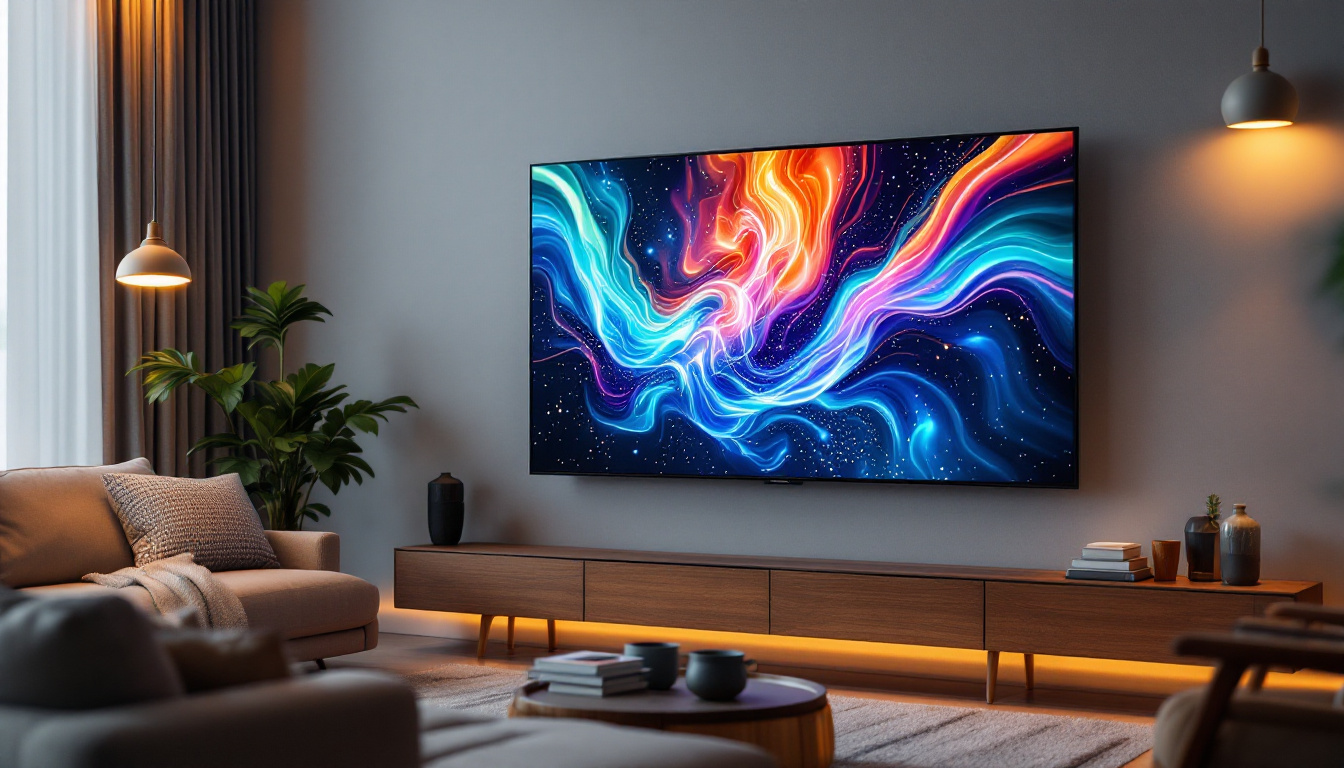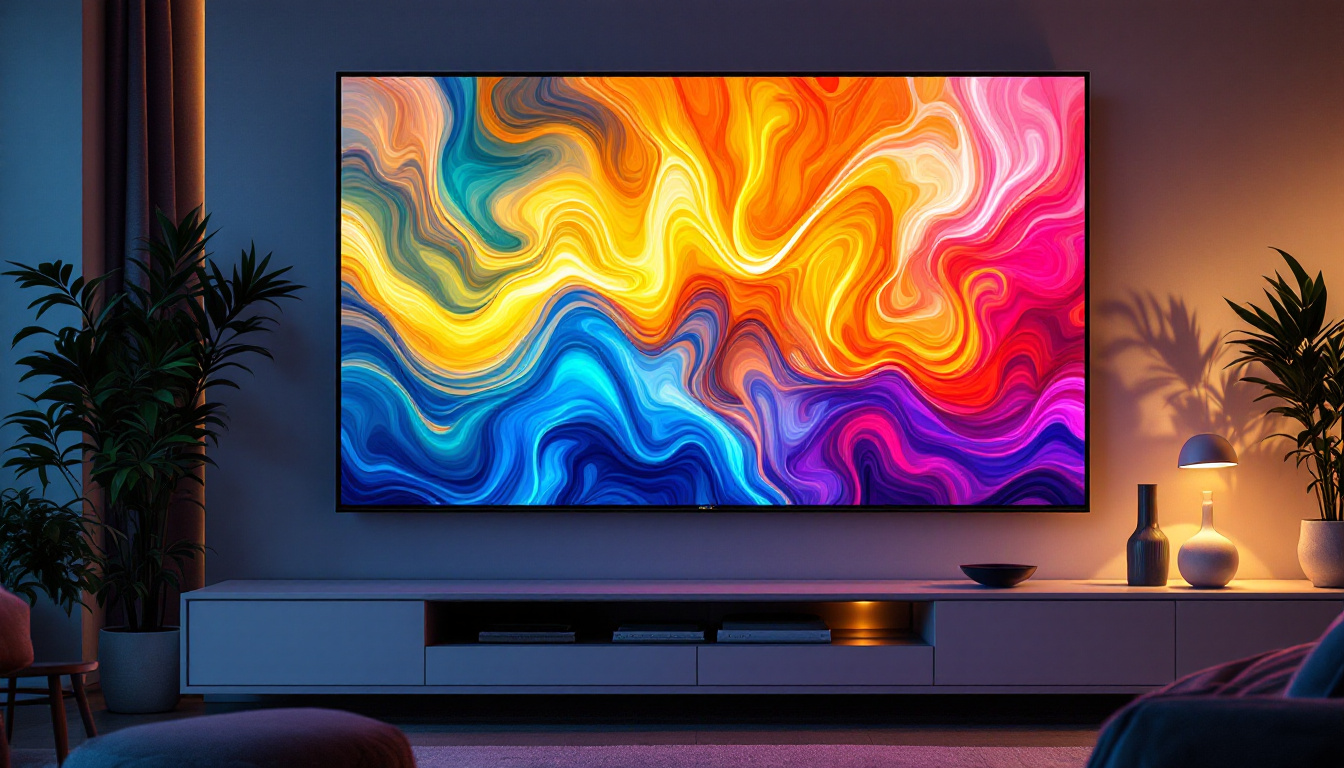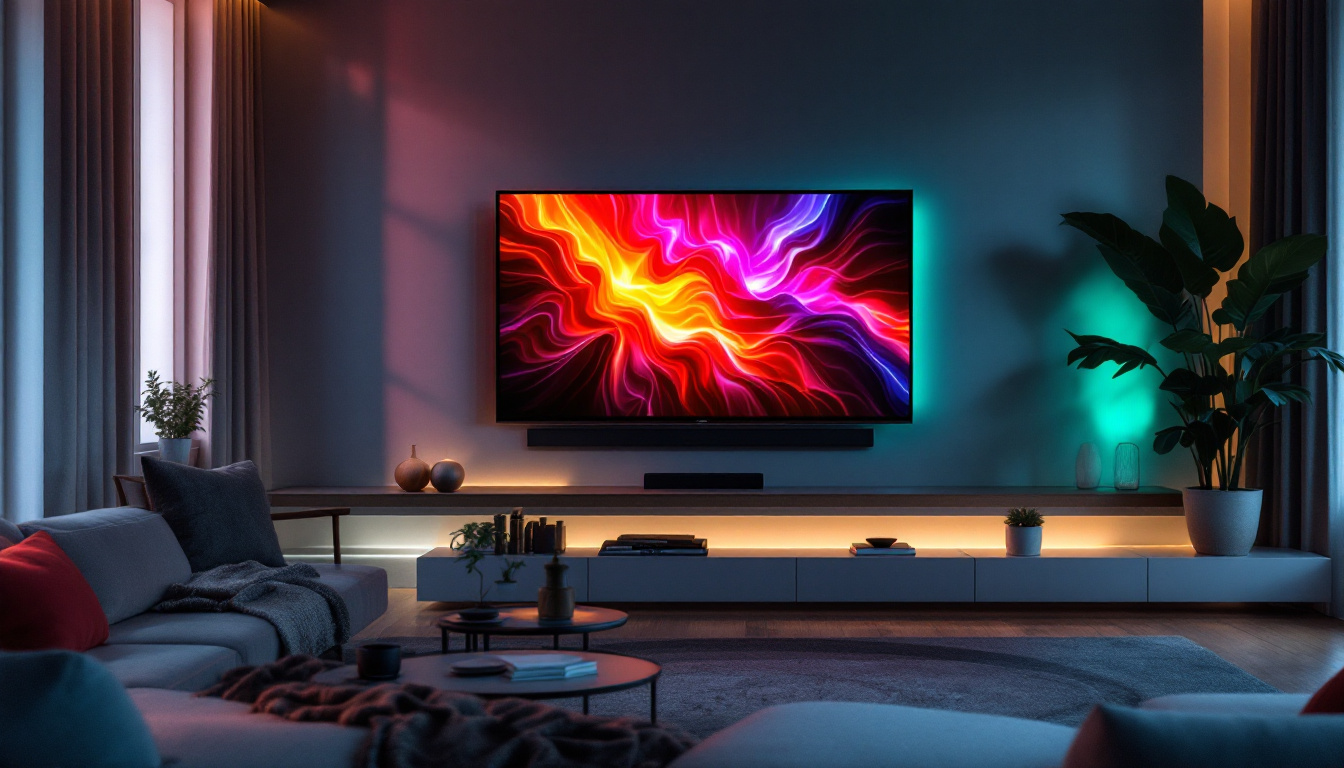What Difference Between LCD And LED: LED Display Explained
In the world of display technology, the terms LCD and LED are often used interchangeably, leading to confusion among consumers. While both technologies are used in televisions, monitors, and other display devices, they have distinct characteristics that set them apart. This article delves into the differences between LCD and LED displays, explaining how each technology works and the advantages and disadvantages of each.
Understanding LCD Technology
LCD, or Liquid Crystal Display, is a technology that uses liquid crystals to produce images. These crystals are sandwiched between two layers of glass or plastic, and when an electric current is applied, they align to allow light to pass through. The light source for LCDs typically comes from fluorescent lamps, which illuminate the display from behind. This innovative approach to display technology has revolutionized how we view digital content, leading to the widespread adoption of LCDs in various devices, from smartphones to large-screen televisions.
How LCD Displays Work
In an LCD display, the liquid crystals themselves do not emit light; instead, they manipulate the light that passes through them. The process begins with a backlight, which is usually a cold cathode fluorescent lamp (CCFL). This backlight shines through the liquid crystals, which act as a filter to create the desired colors and images. The colors are produced by combining red, green, and blue sub-pixels, which together form the full spectrum of colors visible to the human eye. The precision of this color mixing allows for vibrant displays that can render complex images and videos with remarkable fidelity.
One of the key advantages of LCD technology is its ability to produce sharp images with high resolution. LCDs are known for their clarity and are widely used in various applications, from computer monitors to televisions. However, they do have limitations, particularly in terms of contrast and color accuracy compared to newer technologies. For instance, while LCDs can display a wide range of colors, they may struggle to reproduce deep blacks and bright whites, which can affect the overall viewing experience, especially in darker environments.
Advantages and Disadvantages of LCD Displays
LCD displays offer several benefits, including:
- Thin and lightweight design, making them easy to mount and transport.
- Energy-efficient, especially when compared to older CRT displays.
- Good color reproduction and sharp image quality.
However, there are also drawbacks to consider:
- Limited viewing angles, as colors can shift when viewed from the side.
- Lower contrast ratios compared to LED and OLED displays.
- Response times can be slower, leading to motion blur in fast-moving images.
Despite these limitations, advancements in LCD technology continue to emerge. For example, the introduction of In-Plane Switching (IPS) panels has significantly improved color accuracy and viewing angles, making them a popular choice for professional graphic design and photography. Additionally, the development of LED backlighting has enhanced the brightness and energy efficiency of LCD displays, allowing for thinner screens without sacrificing quality. As manufacturers strive to overcome the inherent challenges of LCD technology, the future of displays remains an exciting field of innovation.
Exploring LED Technology
LED, or Light Emitting Diode, technology is often referred to in two contexts: as a type of display and as a backlighting method for LCDs. When discussing LED displays, it is essential to clarify that these displays are often actually LCDs that use LED backlighting. However, true LED displays, such as OLED (Organic Light Emitting Diode), operate differently and offer unique advantages.
How LED Displays Work
In LED displays, each pixel is made up of tiny light-emitting diodes that produce their own light. This means that unlike traditional LCDs, which rely on a separate backlight, LED displays can achieve deeper blacks and higher contrast ratios because they can turn off individual pixels completely. This capability allows for more vibrant colors and better overall image quality.
LED technology can be categorized into two main types: edge-lit and full-array. Edge-lit LED displays have LEDs positioned around the edges of the screen, while full-array LED displays feature a grid of LEDs behind the entire screen. Full-array displays generally provide better uniformity and contrast.
Advantages and Disadvantages of LED Displays
LED displays come with a range of benefits:
- superior contrast ratios and deeper blacks due to the ability to turn off individual pixels.
- Wider color gamut, resulting in more vibrant and accurate colors.
- Thinner and lighter designs compared to traditional LCDs.
On the downside, LED displays can have some limitations:
- Higher cost compared to standard LCDs.
- Potential for uneven backlighting in edge-lit models.
- Viewing angles can still be an issue, particularly in lower-quality models.
Comparing LCD and LED Displays
When comparing LCD and LED displays, it is essential to consider various factors, including image quality, energy efficiency, and price. While both technologies have their strengths and weaknesses, the choice ultimately depends on the specific needs and preferences of the user.
Image Quality
Image quality is often the most significant factor in choosing between LCD and LED displays. LED displays generally outperform traditional LCDs in terms of contrast and color accuracy. The ability to turn off pixels in LED displays allows for deeper blacks and more vibrant colors, making them ideal for watching movies or playing video games.
However, high-quality LCDs with advanced technologies, such as IPS (In-Plane Switching), can also offer excellent color reproduction and viewing angles. Therefore, it is crucial to evaluate the specific model and its features rather than relying solely on the display type.
Energy Efficiency
Energy efficiency is another critical consideration. LED displays tend to be more energy-efficient than traditional LCDs, primarily due to their ability to produce more light with less power. This efficiency can lead to lower electricity bills over time, making LED displays a more environmentally friendly option.
However, it is worth noting that not all LED displays are created equal. Some models may use more energy than others, so it is essential to check the energy ratings before making a purchase.
Price Considerations
Price is often a decisive factor for many consumers. Generally, traditional LCDs are more affordable than LED displays, making them an attractive option for budget-conscious buyers. However, the price gap has been narrowing as LED technology becomes more mainstream and production costs decrease.
Investing in an LED display may provide better long-term value due to its superior image quality and energy efficiency. Therefore, it is essential to weigh the upfront costs against the potential benefits over time.
Applications of LCD and LED Displays
Both LCD and LED displays are widely used across various industries and applications. Understanding where each technology excels can help consumers make informed decisions based on their specific needs.
Common Uses of LCD Displays
LCD displays are prevalent in many everyday devices, including:
- Computer monitors
- Televisions
- Smartphones and tablets
- digital signage and advertising displays
Due to their affordability and good image quality, LCDs are often the go-to choice for budget-friendly devices. They are suitable for general use, including office work, casual gaming, and streaming videos.
Common Uses of LED Displays
LED displays are increasingly being used in various applications, such as:
- High-end televisions
- professional monitors for graphic design and video editing
- Outdoor advertising and billboards
- Smartphones and tablets with OLED technology
LED displays are particularly favored in scenarios where image quality is paramount, such as in film production, photography, and gaming. Their ability to deliver vibrant colors and deep blacks makes them ideal for immersive experiences.
Future of Display Technology
The display technology landscape is continually evolving, with new advancements and innovations emerging regularly. As consumers become more discerning and demand higher quality visuals, manufacturers are investing in research and development to push the boundaries of what is possible.
Emerging Technologies
Several emerging technologies are poised to change the display landscape, including:
- MicroLED: A technology that combines the best features of LCD and LED, offering high brightness, excellent color accuracy, and energy efficiency.
- OLED: Organic Light Emitting Diodes provide superior contrast and color reproduction, making them increasingly popular in high-end displays.
- Quantum Dot Displays: This technology enhances color accuracy and brightness by using quantum dots to filter light, resulting in more vibrant images.
As these technologies develop, they may offer alternatives to traditional LCD and LED displays, providing consumers with even more choices and improved viewing experiences.
Conclusion
In summary, while LCD and LED displays are often confused, they represent different technologies with unique characteristics. LCDs are known for their affordability and decent image quality, while LED displays offer superior contrast and color accuracy. Understanding the differences between these technologies can help consumers make informed decisions based on their specific needs and preferences.
As the display technology landscape continues to evolve, staying informed about the latest advancements will be crucial for anyone looking to invest in a new display. Whether opting for an LCD or an LED display, the right choice will depend on individual requirements, budget, and intended use.
Discover LumenMatrix’s Advanced LED Display Solutions
Ready to experience the pinnacle of display technology? LumenMatrix is at the forefront of LED innovation, offering a wide array of cutting-edge LED display modules designed to elevate your visual communication. From the immersive Indoor LED Wall Display to the dynamic Outdoor LED Wall Display, and from the mobile versatility of Vehicle LED Displays to the interactive Floor LED Display, LumenMatrix has a solution tailored to your needs. Embrace the future with our Custom LED Displays, All-in-One LED Displays, and LED Transparent Displays, and see how our commitment to excellence can transform your brand’s visibility. Check out LumenMatrix LED Display Solutions today and step into a world of vibrant colors and unparalleled clarity.































